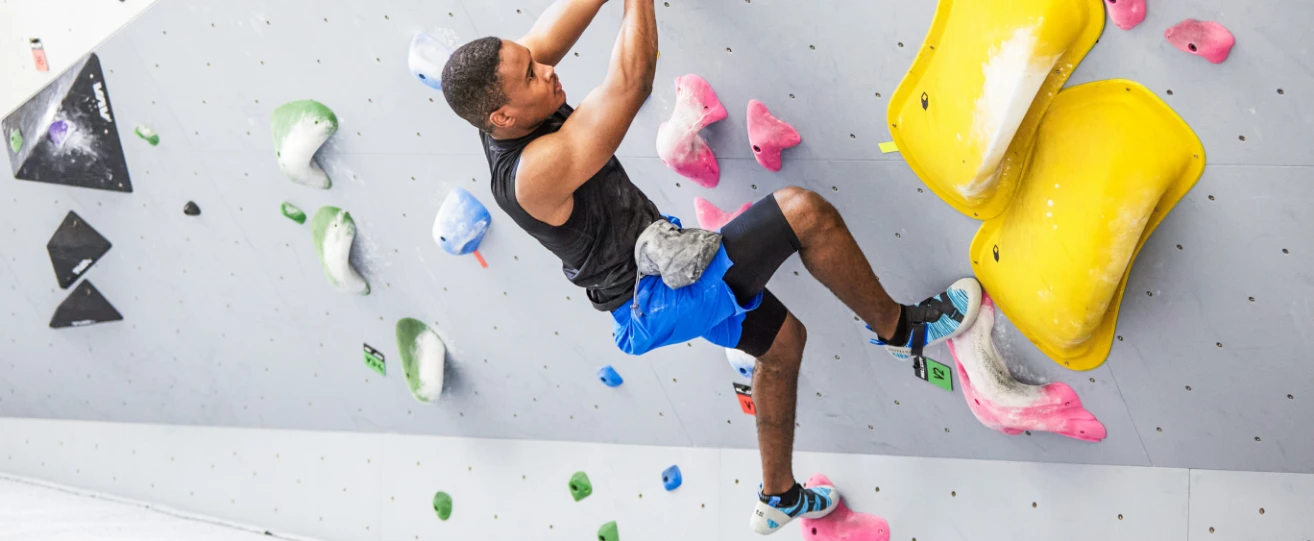Climbing shoe selection is crucial for comfort and performance. The right shoe will enhance your climbing experience.
Consider multiple factors when choosing a shoe, including asymmetry, downturn, stiffness, material, closure system, and volume.
Focus on comfort over aggressive features for beginners. Go for neutral shoes that allow proper footwork development.
As you progress, explore shoes with a moderate downturn and stiffer midsole for edging power on steeper terrain.
Welcome to Velocity Climbing Miami! Selecting the right climbing shoe is crucial for optimizing your performance and comfort on the wall. In other words, the right shoe means more fun, better performance and more comfort. This guide will unveil the key features to consider as you embark on your journey to find the perfect fit.

While we are not here to tell you that climbing shoes will ever be comfortable like a pair of sneakers, they also should not be intensely painful. Modern climbing shoes are designed to perform well without being insanely tight. And remember, the more pain you have the less weight you put on your feet which is the opposite of the purpose of a climbing shoe.
Climbing shoes have a number of characteristics that impact both comfort and the way in which they perform. Some of these are:




We want you to feel confident and secure on our climbing walls. Finding the perfect climbing shoe is a journey of discovery. By understanding the various features and how they impact performance and comfort, you’ll be well-equipped to select the ideal shoe for your climbing goals and foot shape. Don’t hesitate to seek guidance from the experienced staff at Velocity Climbing Miami – we’re here to help you climb higher and stronger!
Visit us today at Velocity Climbing Miami or check out our website to learn more about our climbing packages, memberships, and awesome climbing community!
Don’t forget to follow us on social media for climbing tips, tricks, and updates on upcoming events and classes at Velocity Climbing Miami!
2280 NW 41st Street Miami Florida 33142
1 block from Erlington Heights metrorail station.
(786) 542-5005
Monday – Friday: 3 PM – 10 PM
Saturday: 9 AM – 10 PM
Sunday: 9 AM – 8 PM
Members Only: Tue & Thu 10 AM – 3 PM